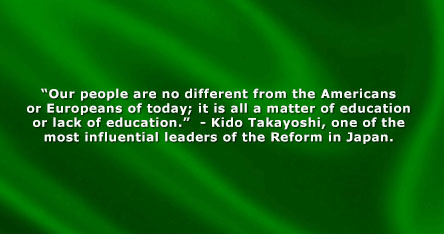- Feudalism
- Confrontation with India
- Separation of Religion and State in Pakistan
- Healthcare for All
- Education for All
- Controlling Corruption
- Energy Crises
- Population Control
- Climate Change
- Reduce Violence in Karachi
SHARE THIS PAGE
JOIN OUR MAILING LIST
DONATE $5, $10, $25, $50 or $100
Our Recommendation
Government needs to implement the following on an urgent basis.
1) Provide a school stipend to all poor families for up to three children (preferably girls) if they send their children to school. Children must have a regular check up at a clinic.
2) To reduce the education gap between rich and poor children, the government must legislate a Right to Education Act (similar to India’s Right to Education Act of 2009) requiring all private schools to reserve 50% seats for children of poor families. The government will be responsible to pay all expenses for poor children going to the private schools.
Explanation
School Stipend is an imaginative program that combats hunger, illiteracy, child labor and petty crime in a single stroke. It also frees up jobs for adult thus reducing unemployment for adults. Mothers of the children going to schools can be paid the stipend if children maintain at least 85% attendance. If a poor family has more than three children, preference should be given to girls as an educated mother is more important for the overall well being of the family. The amount of the school stipend needs to be calculated for each city/rural area.
This program (called Bolsa Escola or School Stipend) was originated in Brazil. Education is the most important investment a country can make but children will not go to school if they have to work so their family can eat. The equivalent of $5 a month may not seem like a big sum but it quickly doubled the number of poor children in schools in Brasilia area (Brazil) and has had immediately visible effects, including taller, healthier, better-fed children and a big reduction in petty crime since the kids are no longer hanging out on the streets.
In Pakistan, 21% of the 187m population lives in poverty, earning less than $1.25 per day and 20% lives in hunger. Over 70% population in rural areas is illiterate and that is one of the major reasons for their poverty. Our rough estimate is that the school monthly stipend should be about $5 per child ($60 annually) for the 10 million poor children between the ages of 6 and 16. It will take around $600 million annually to cover all poor families in Pakistan. It is not a big amount for a country that spends $6.3 billion on a defense budget (2013.)
Japan’s Story about Education for All
When the Japanese saw big warships of the United States in 1853, they quickly realized that they were far behind in technology and must do something about it. They studied carefully and adapted Western political, military, technological, economic, and social forms. After the Meiji restoration in 1868, Japan put the new educational plan in unequivocal terms: “There shall, in the future, be no community with an illiterate family, nor a family with an illiterate person.” Kido Takayoshi, one of the most influential leaders of the reform, put the basic issue with great clarity: “Our people are no different from the Americans or Europeans of today; it is all a matter of education or lack of education.”
All of these radical changes made Japan a strong county in a short time. Japan defeated China, a much larger country, in a war in 1894-95 because the Chinese failed to learn the same lesson and reform China as the Japanese did. Japan also defeated Russia in the 1904-05 war. It was the first victory by an East Asia country against a major imperial power. (Russian economy was too poor to continue the war at that time.)
Between 1906 and 1911, education consumed as much as 43% of the budget of the towns and villages, for Japan as a whole. By 1913, even though Japan was still economically very poor and underdeveloped, it was publishing more books than Britain and the United States. (Japan also abolished traditional feudalism during that period.)
It is also interesting to note that Japan was destroyed in World War II but it still became world’s 2nd largest economy within a short time because it had strong institutions (buildings were destroyed but souls were there) backed by a highly educated population and little or no military expenses.
Other Points about Education for All
- There are about 6,000 “ghost” (closed) schools in Sindh province alone. These schools are closed due to corruption or mismanagement. Citizens must take serious actions to reduce corruption in education.
- Educational Assessment System and Training (EAST) is a company in Pakistan that has developed a curriculum and teaching methodology to educate older children (age 9+) for primary level literacy in just one year. They provide curriculum as well as training to teachers to effectively teach their curriculum. We think people who want to support education in Pakistan on personal level can work with this company. The cost of the entire curriculum for entire primary education is about 1,000 rupees (Rs). Teachers fees are about Rs. 12,000. So the total cost to educate 10 children for entire primary education is about Rs. 22,000 ($220) per year.
- The Citizen Foundation (TCF) is running very good schools (about 900) in Pakistan. Fees are charged based on family income of the children so these schools are run mainly on donations from people. They provide complete primary and secondary education. The cost for one school unit that educates about 200 students is $15,000 per year. People who want to support education may work with this organization.
- Competency-based Model for Higher Education: Pakistan’s focus must remain to provide primary and secondary education to all children. We can improve our current higher education system by implementing Western Governance University model (WGU.edu.) WGU, an online University, charges a flat fee ($3,000) for one term of 6 months. Students can take as many credits as they can handle in one term. There is no fixed length for a course. Students can study the materials of a course and they can take exam whenever they are ready. It is called competency-based or performance-based model. Students are able to complete a Bachelor’s degree in just two years for about $12,000. Usually it costs four years and about $20,000 to $40,000 per year for a Bachelor’s degree. At this time, WGU offers programs only in USA and Canada.
References
1) Bolsa Escola
2) Why Pakistan Needs Literacy Movement
The United Nations Educational, Scientific and Cultural Organization (UNESCO) puts our literacy at 56%, but also reports that the largest part of our nation which is the rural Pakistan has more than 70% illiteracy. Our regional neighbors like India and Sri Lanka boast literacy rates of around 75% and 91% respectively.
3) Our new increased education budget is a victory for Malala and every Pakistani
4) India Right to Education Act, created in 2009.


